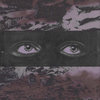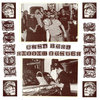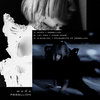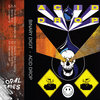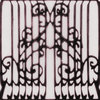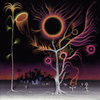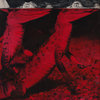Enormous Savages by Cultural Amnesia

Originally released on LP by Anna Logue Records, 2007
Reviews
'The appearance of this record is a remarkable piece of musical archaeology and certainly one of the reissues of the year. ... [T]he wordiness of the songs, coupled with the skeletal melody lines, create an utterly distinctive atmosphere of blank austerity. ... The whole album, in fact, is alive with such atmospheres. Cultural Amnesia have recently reformed and are working on new material; it's hard, though, to see them bettering Enormous Savages, a set of intricate electronic ballads that honestly and evocatively reflect the time and place of their creation.' - The Sound Projector
'[T]his compilation ... fizzles with an angry spark of DIY electro-agit-art pop. The nine songs ... positively hum with inventive use of cheap drum machines and keyboards ... bristle with ideas...' - Plan B
'The new wave mood is consistent throughout ... accompanied by sonic experimentation and an often hazy psychedelic swirl... Cultural Amnesia most certainly had a future beyond the few years they were together... Little Savage ... shows that they still have the talent and ability to produce excellent music.' - Connexion Bizarre
'[M]y personal favourite is ... "Blind Rag", which seems to come from some strange world where Throbbing Gristle and Soft Cell had fallen into the teleporter together and emerged as some strange gloomy industrial-cabaret hybrid.' - Freq
'1981's "Repetition for this World" stands out: its quick beat, martial guitar stabs, and hooky synth line keep it interesting. Also from 1981, "Materialistic Man" sounds pretty cool even today. There's a heavy Cabaret Voltaire influence on this one and its experimental use of phase shifting and distortion might have been downright pioneering for its time.' - Delusions of Adequacy
'There's a peculiar charm to the work of Cultural Amnesia ... a vivid concoction of ... primitive electronic rhythms with jolts of abrasive guitar... If the thought of a synth pop post-punk outfit excites, you should seek out Enormous Savages.' - Compulsion
'[T]here's some real gems on here. The opening cut 'Kingdom Come' is a throbbing slow-tempo churner with some great noise-guitar and belted vocals with lyrics like 'Dolly, I don't shit miracles!'. 'The Wildlife of the Tranquil Vale' is like a more song-oriented version of Cabaret Voltaire during their Heaven and Hell phase, while 'Blind Rag' is a haunting electro-pop tune reminiscent of TG's 'United'. Recommended for fans of the genre and anyone who enjoyed the VoD set [Press My Hungry Button].' - Terminal Boredom
'Cultural Amnesia ... developed their own style as part of the Wave genre of the time, often striking a rather sombre and nihilistic note. Nevertheless, a number of songs are also well suited to Minimal Wave parties and should be sure to fill the dance floor, for example "Repetition for this World" - what a cracker.' - Back Again
Cover Copy
Based in a picturesque village about 40 miles west of London, Cultural Amnesia began recording in spring 1980 and stopped in spring 1983. The group produced around 130 tracks, of which about 50 were given limited release. This LP makes available for the first time since the early 80s a small selection of the music.
CA were introduced to the alternative underbelly of postpunk and encouraged to make music by the late Geff Rushton, at the time editor of Stabmental magazine. Geff would shortly change his name to John Balance and, following a period with Psychic TV, form Coil with Peter Christopherson of Throbbing Gristle. Throughout the early part of his career Geff/John continued as unofficial manager of CA. He also wrote songs for the band and three of them are included here.
To begin with CA identified most closely with industrial music, but although it is an element of their sound only a small part of their output falls squarely into the genre. Quite a lot of the time CA wrote approximately conventional songs, and they listened to a lot of pre-punk art rock and alternative music as well as sharing with other postpunk artists and commentators an interest in pop and dance. What developed as they went on was a kind of experimental electropop or synthpop.
The postpunk period was the heyday of ‘cassette culture’ in the UK. Sometimes quite sophisticated alternative businesses, often no more than bedsit operations, cassette-only labels advertised and sought reviews for their products in fanzines and newsletters – with the mainstream press, Sounds and the NME, briefly picking up on the scene – and sold by mail and through some of the more adventurous independent shops, such as Rough Trade. It was this subculture that CA became a part of, releasing three cassette albums and a further 12 tracks on compilations from 1981 to 1984.
For CA, as for many cassettists, the aim was vinyl release. But an agreement for an LP with the German company Datenverarbeitung fell through due to miscommunication, and shortly following this the group stopped activity. More than half the band’s recordings, including much of the material for the LP and another near-complete album collection, remained unreleased. Copies of the cassettes are now hard to find and often pricey.
This album was the first release resulting from the gradual digitisation of the CA tapes.
Originally released on LP by Anna Logue Records, 2007
Tracklist
| 1. | Kingdom Come | 5:53 |
| 2. | Materialistic Man | 3:40 |
| 3. | Repetition For This World | 4:39 |
| 4. | Sacre Bleu | 3:29 |
| 5. | Wee Sorg | 4:47 |
| 6. | The Wildlife Of The Tranquil Vale | 4:50 |
| 7. | Blind Rag | 7:22 |
| 8. | Fetish For Today | 3:30 |
| 9. | Scars For E | 6:45 |
| 10. | Here To Go | 4:11 |
